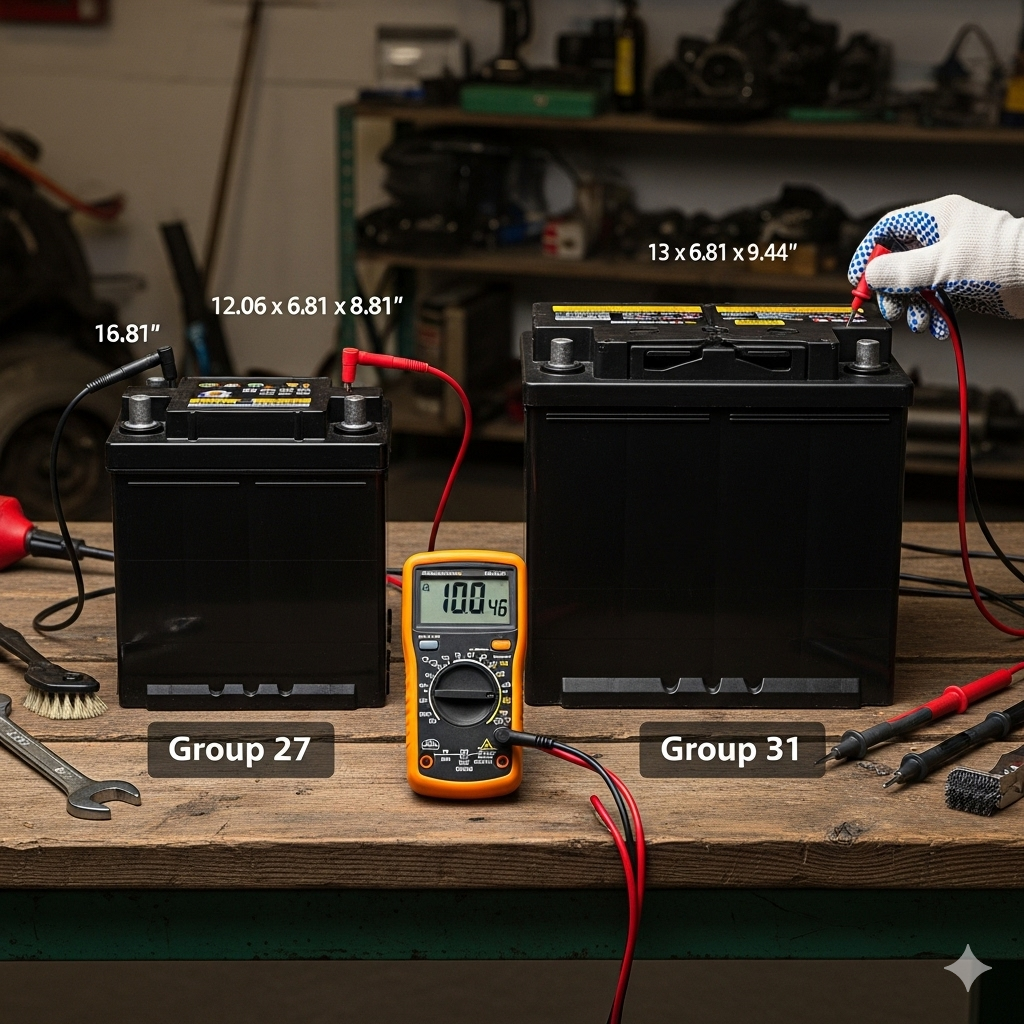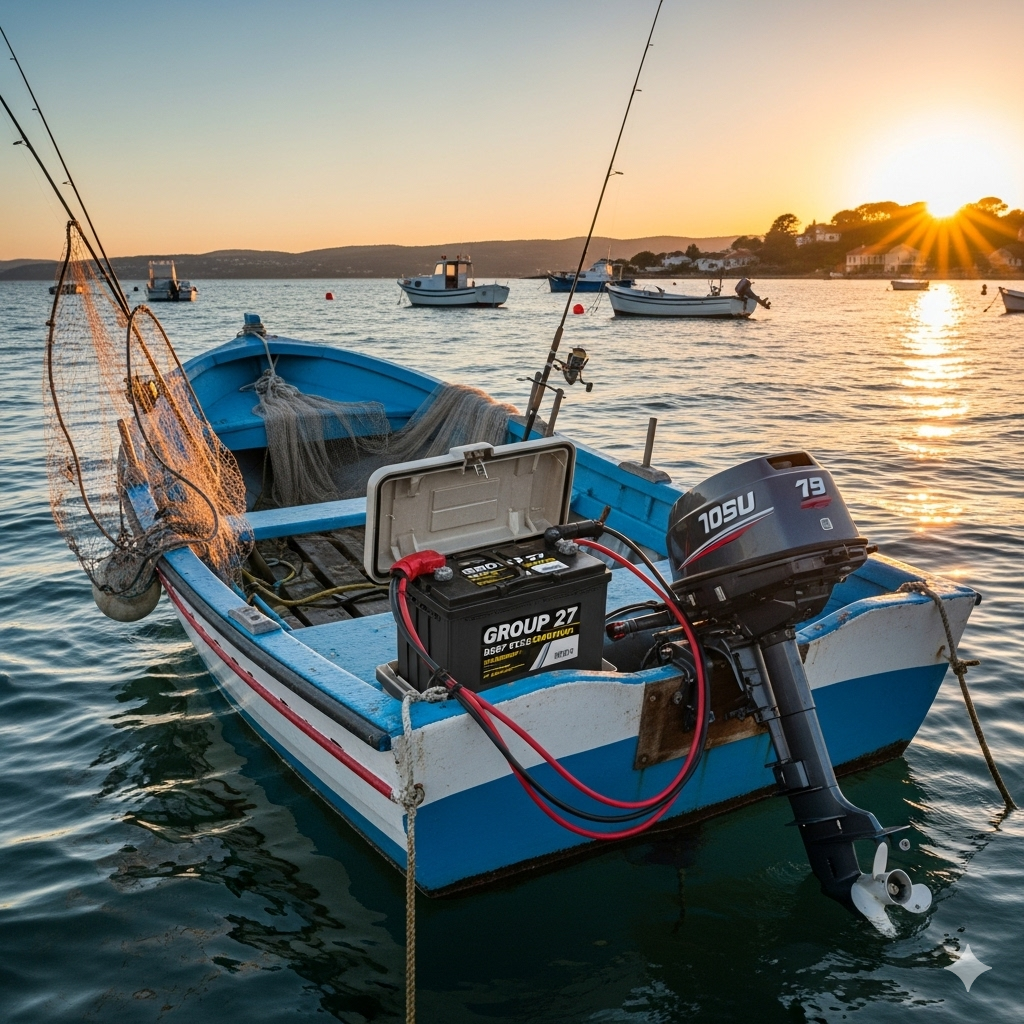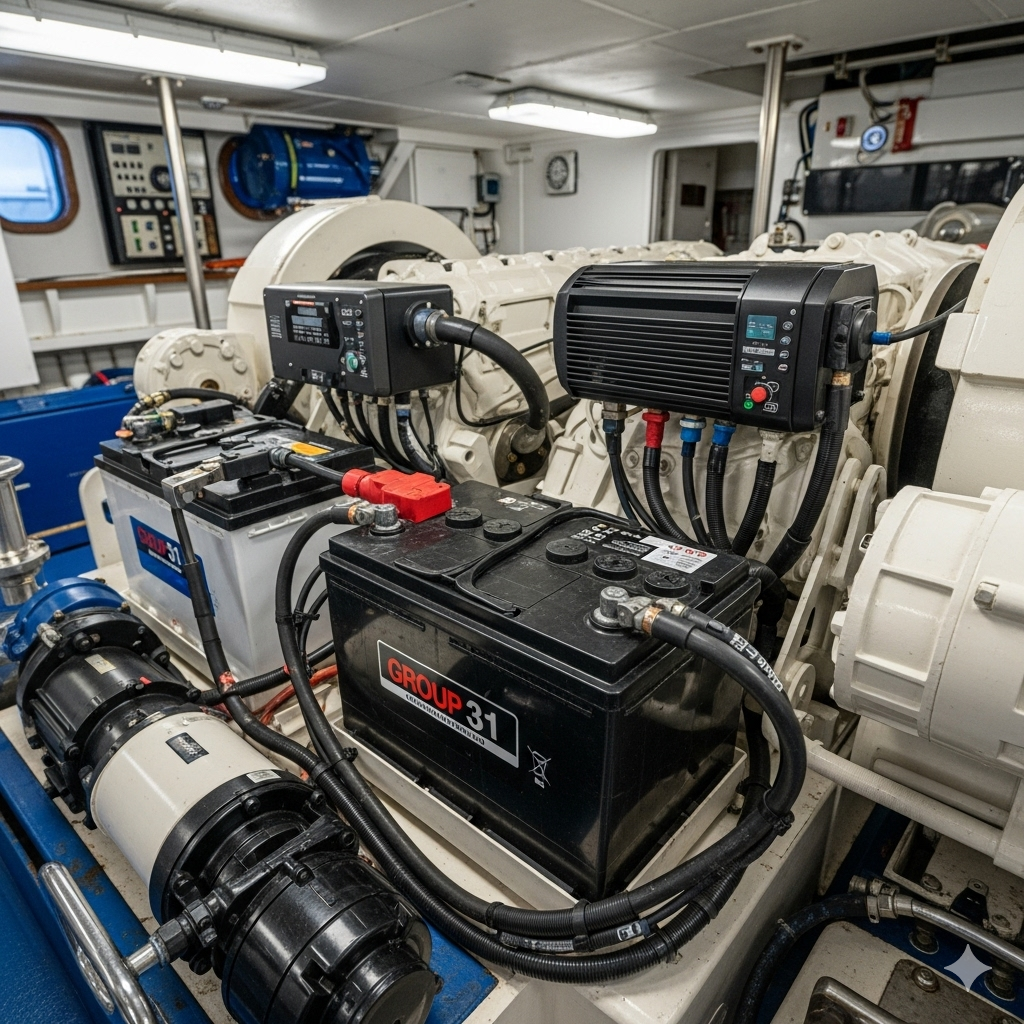Group 27 and Group 31 are two of the most widely used battery sizes in RVs, boats, solar systems, and backup power. At first glance they look similar, but there are clear differences in size, capacity, weight, and performance. Choosing the right one depends on your energy needs, available space, and budget.

Size and Dimensions
Group 27 batteries are about 12.1 inches long, 6.8 inches wide, and 8.9 to 9.2 inches high. Group 31 batteries are longer at around 13 inches, with a height of about 9.3 to 9.4 inches and a similar width.
The main difference is length. If your tray or compartment has limited space, Group 27 fits more easily. If space is available, Group 31 provides extra capacity in the same width.
Capacity and Runtime
Group 27 usually delivers 85 to 105 amp-hours, while Group 31 ranges from 95 to 125 amp-hours.
In practice, this difference means longer runtime. At a 25A discharge rate, Group 27 can last 150 to 170 minutes, while Group 31 often runs 180 to 200 minutes or more. For users who need extended off-grid power, Group 31 offers valuable extra reserve.
Weight and Handling
Group 27 batteries weigh between 60 and 70 pounds. Group 31 is slightly heavier, usually 65 to 75 pounds.
Although the difference is small, heavier batteries need stronger mounting brackets and are harder to handle. Some owners prefer using two Group 27s instead of one Group 31, as this makes installation easier and adds redundancy.
Performance and Starting Power
Group 31 generally provides higher cold cranking amps, ranging from 700 to 1150, compared to Group 27’s 600 to 1000.
This makes Group 31 more reliable for starting larger engines and operating in cold climates. It also maintains voltage better under heavy loads, which benefits sensitive electronics and high-demand appliances.
Price and Value
A Group 27 battery typically costs $100 to $200. Group 31 is slightly more expensive at $150 to $300.
Lithium versions of Group 31 can cost $500 or more, but they are much lighter, last for thousands of cycles, and provide better long-term value despite the higher upfront price.
Group 27 vs Group 31 Battery Comparison
| Feature | Group 27 Battery | Group 31 Battery |
|---|---|---|
| Dimensions | ~12.1″ L × 6.8″ W × 8.9–9.2″ H | ~13.0″ L × 6.8″ W × 9.3–9.4″ H |
| Capacity (Ah) | 85–105 Ah | 95–125 Ah |
| Reserve Time | ~150–170 minutes at 25A | ~180–200+ minutes at 25A |
| Cold Cranking | 600–1000 CCA | 700–1150 CCA |
| Weight | 60–70 lbs | 65–75 lbs |
| Price Range | $100–$200 | $150–$300 (LiFePO₄ up to $500+) |
| Best Use Cases | Weekend RVs, small boats, light solar use | Full-time RVs, larger boats, off-grid loads |
Applications
Group 27 is compact, affordable, and well-suited for weekend RV trips, small boats, and modest solar setups. It is easy to install and fits where space is tight.
Group 31 is larger, stronger, and ideal for full-time RV living, larger marine systems, and off-grid applications that require higher energy and longer runtime. If you rely on heavy loads or frequent deep cycles, Group 31 provides the performance edge.

Group 27 Battery Installed on Fishing Boat for Outboard Motor Power

Group 31 Battery for Marine Engine Room Applications
Conclusion
Both Group 27 and Group 31 batteries are reliable choices, but they serve different needs. Group 27 is practical and budget-friendly for moderate loads, while Group 31 is better for users who want more capacity, stronger starting power, and longer runtime.
If space and budget allow, Group 31 is often the smarter investment. For those who want the best long-term value, especially in demanding applications, lithium versions of Group 31 deliver the lightest weight, the longest lifespan, and the highest performance.




